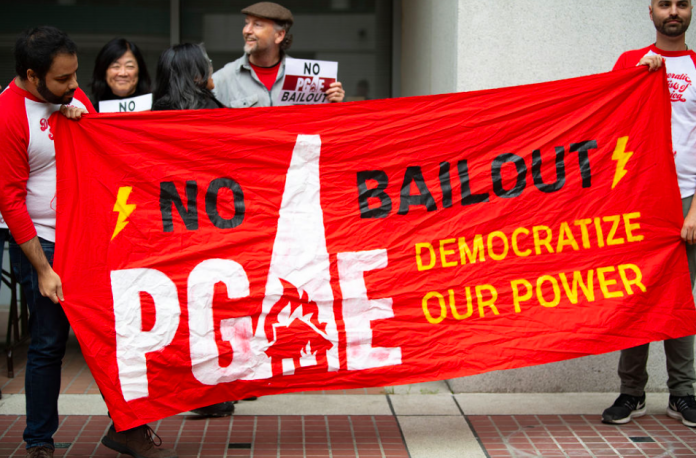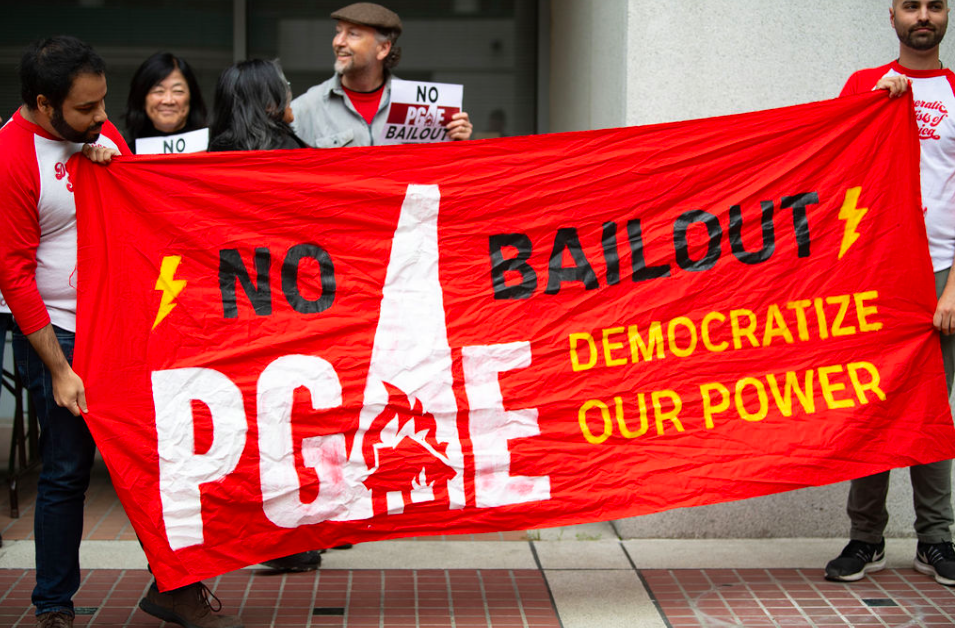
I am a longtime critic of the SF Chronicle, so let me take a second to say this: As the crisis of power outages emerged throughout the day, the Chron had the best local coverage of any regional paper. They were the first up with a functional map (the Santa Rosa Press Democrat had one, too); the LA Times, Mercury News and broadcast media maps, taken directly from PG&E, were largely useless. The Chron map was the first to have an interactive system where you could type in your address (or the address of someone you care about) and see if the power was on, was off, or was about to go off.

The Chron and the PD had info about where to go for help, how to survive the blackouts, which schools and hospitals were open … pretty basic, but important information.
The Chron, though, kept its map behind its paywall. I get that reporters need to get paid, and everything isn’t free, and the Chron isn’t expensive — but jeez, in a crisis? For one day, suspend the paywall?
But beyond the first-day crisis story, nobody, not one media outlet that I have followed raised what is almost certainly the most important question to come out of this human-created disaster:
What’s the long-term plan to fix this – and doesn’t the blackout demonstrate (as if we needed any more evidence) that the energy future of Northern California cannot rely any more on an investor-owned private Pacific Gas and Electric Company?
There are no lack of sources to talk about this. My email was full of comments from environmental activists talking about the end of PG&E. One was from Alexandra Nagy, California director for Food and Water Action:
Governor Newsom’s bail out of PG&E shareholders under the guise of a wildfire insurance fund is fueling the crisis we see here today. Instead, he could have used his power as Governor to take over the utility and run it to serve the residents of California and not Wall Street investors.
Turning out the lights for weeks at a time will become the new normal for California residents unless the state takes action to build a more sustainable energy system. Distributed generation from clean, renewable energy and storage can help reduce reliance on large scale distribution lines and increase reliability–not to mention the added benefits of cleaner air, a more stable climate, and lower energy costs associated with clean, renewable energy.
It was easy to get Nagy on the phone to elaborate. She said that this “isn’t the first or last time we will face wildfires.” As long as the electricity that is critical to the state’s functioning is delivered over long distances by a profit-seeking company that scrimps on maintenance, blackouts are going to be the new normal.
Her suggestion (and it’s not that unusual, lots of people are saying this): The governor needs to authorize the state to take over PG&E, instead of bailing it out. Then the state needs to break up the company and hand it over to local agencies that can (again, using the money that will bailout PG&E) build local generation.
If there were solar and wind generators in every community, with adequate battery backups, then the state wouldn’t rely so much on long-distance, high-voltage lines that are prone to causing fires.
“When we move to distributed generation, we can create resilient hubs,” she said.
PG&E’s distribution system is old, clearly, and creaky, clearly, and needs to be replaced. The system of overhead lines needs to go, in favor of underground cables. The ratepayers or the taxpayers, who are the same people, are going to foot the bill anyway.
Why should PG&E make a profit on the deal?
State Sen. Scott Wiener says he wants tougher rules on blackouts. But as far as I can tell, nobody in Sacramento is saying that we need a tougher approach to PG&E – as in, ending its role as the power provider of default in Northern California.
This ought to be a big story. So far: Nothing.


